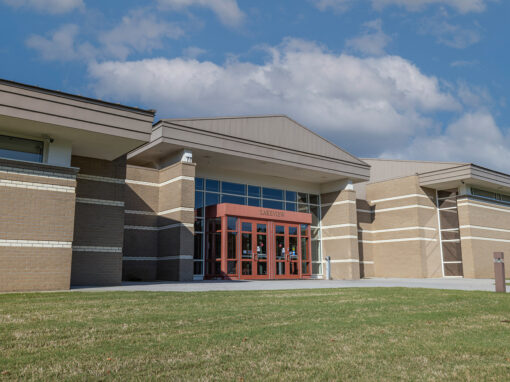In his current role at Amazon as a Learning Assistant, Eric Johnson has always wanted to find a clear path to higher-level positions. Eric found that path with the Bachelor of Business in Logistics and Supply Chain Management at Georgia Highlands College.
He said his general interest in logistics and supply chain management has come from his time at Amazon – where the skills are highly sought-after and highly utilized within the company.
Eric started his college journey pursuing an associate degree at GHC focused on business administration. He then used that as a foundation for the bachelor’s degree in logistics and supply chain management at GHC.
“Through the program at Georgia Highlands College, I have gained significant knowledge on logistical processes, problems and solutions that have translated over to my current job with Amazon,” Eric said. “The result has made me more skillful and able to quickly problem-solve to ensure an efficient flow through the warehouse and down the road.”
Eric graduates with his bachelor’s degree from GHC in May 2022. He said the new skills he has learned will give him the option to improve on his current role at Amazon, as well as explore higher-level positions at Amazon thanks to earning his bachelor’s at GHC.
“It is important for me to be financially independent and stable as it creates a better life for not only me but my family around me,” Eric said. “I would like anyone who is thinking about going to college to do it! It will help and enhance your life in ways you cannot begin to imagine.”
Untangling and solving the complicated and complex issues facing logistics and supply chain today are at the forefront of the learning process at GHC. While logistics and supply chain management covers a breadth of topics, Eric said supply chain risk mitigation is one aspect he finds very interesting, and it ties directly into what he does at Amazon.
“There are several aspects to mitigating risk within the supply chain through management programs, process problem identification plus solution, as well as ideologies such as ISO 31000 (risk management),” he said.
Eric explained how what he learned at GHC is vital to solving logistics and supply chain problems which ultimately make for a better future in the field that has grown tremendously over the past few years.
“Being able to diversify and become a creative problem-solver in risk mitigation has proven beneficial as I worked for the Network Operations Center team for Amazon tracking risk via over-the-road transportation and warehouse operations. I was able to connect the dots and develop a better understanding through GHC’s program by connecting it with my job and it has almost become an obsession.”
Eric has been very happy with his experience working one-on-one with faculty at GHC, leading to expanding and growing his knowledge beyond just what happens in the classroom. In his studies, Eric developed a supply chain risk mitigation honors project with Logistics and Supply Chain Management Professor Lucinda Montgomery.
“Not only has [Professor Montgomery] allowed me to run with the project and go multiple different directions with it, but she’s also been wonderful as it pertains to understanding how my mind operates,” he said.
Eric said the amount of care, support, and attention GHC faculty gives students really helps to make a difference in the learning outcomes and success rate with each project and class.
“[Professor Montgomery] has been understanding that it is difficult for me to translate my thoughts to paper and provided me with several ideas and avenues on how to handle it and create a truly enticing project,” he said. “She has been a very influential person in my life for [these last few] years and I am incredibly grateful that she allowed me to work on this project with her.”
Utilizing the history of logistics and supply chain alongside current aspects, Eric and a group of his classmates researched and presented on the topic of Digital Twins.
“Digital Twins is a fascinating topic ranging back to NASA and how they would model parts of their stations and tools back on earth,” he said. “The point of this was that if something went wrong, they could figure out how to solve the issue on earth for easier operations in space.”
He explained currently Digital Twins are used in recreating human environments, warehousing processes and are even used in how we create T-shirts on a simplistic level.
“Having a digital version of a physical object or situation improves the ability to edit, reprogram, or modify to have a successful product or process,” he said. “On a basic level, think how we go online to custom order something – we get to see the digital version of the physical object we have ordered.”
Eric also completed a 3D warehousing project for the program, which allowed him to utilize his experience from working at Amazon.
“Being able to identify parts of a warehouse such as cross-dock and the type of warehouses such as an ‘L’ shape or ‘I’ shape proved to be beneficial to my team at the time,” he said. “While I had the familiarity, putting it together was somewhat more challenging. Going from paper to physical object proved a unique and creative challenge that we winded up fairing well on.”
Additionally, Eric interned with the Bartow-Cartersville Joint Development Authority, which he said provided him with a unique and exciting analytical perspective of how the local economy functions.
“Being able to see behind the scenes how companies find suitable land and buildings to purchase/lease and the variables they look at the most has been a tremendous eye-opener for me,” he said.



